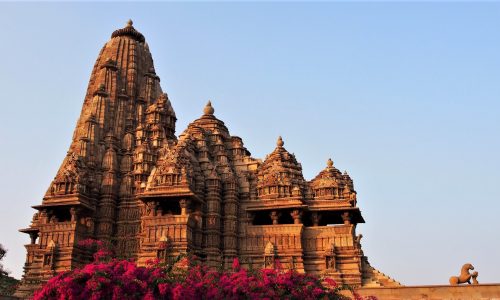INDIAN MONKEY
The Indian Monkey is one of the most famous monkeys roaming around the forested jungles of India as well as the urban areas of India. They are terrestrial in nature and are very clever. Due to habitat fragmentation, they have now settled in many urban areas of Northern India, where they live in conjugation with humans. This human – animal conflict has been a subject of concern as well as amusement for all. Many photographers and tourists visit these urban cities to study this species of monkey and many television documentaries and shows have also been developed. This animal is considered to be sacred by the Hindus and has been named after the Hindu – god Hanuman.
INDIAN MONKEY FACTS
| Kingdom | Animalia |
|---|---|
| Class | Mammalia |
| Order | Primates |
| Family | Cercopithecidae |
| Sub Family | Colobinae |
| Genus | Semnopithecus |
| Species | Simia entellus |
| Status | Threatened |
| Lifestyle | Highly sociable |
| Lifespan | 20 years |
| Gestation Period | 190 days to 210 days. |
| Sexual maturity | Female 3 to 4 years, Male 6 to 7 years |
| Number of offspring | Usually one or sometimes two. |
Species of Hanuman (Indian Monkey) or Gray or Indian Langur:
- Nepal Gray Langur, Semnopithecus schistaceus
- Kashmir Gray Langur, Semnopithecus ajax
- Tarai Gray Langur, Semnopithecus hector
- Northern Plains Gray Langur, Semnopithecus entellus
- Black-footed Gray Langur, Semnopithecus hypoleucos
- Southern Plains Gray Langur, Semnopithecus dussumieri
- Tufted Gray Langur, Semnopithecus priam
Physical Characteristics: The male Hanuman Indian monkey weighs around 18 kg while the female one weighs around 11 kg. . The total length of the male is about 51 to 78 cm while the female measures about 40 to 68 cm including heads and body. The tail length is about 69 cm to 101 cm. They have very strong limbs and can run excellent in ground. They are also very agile and good climbers. Their log tail gives them support and balance while climbing and walking. The fur is generally gray in color, while some have yellowish fur with black face and ears.
Diet: The Hanuman langurs feed upon leaves, fruits, flowers, buds, berries, ferns, bamboo, and lichens. They have a very good and robust digestion system, whereby they can even digest toxins. They eat very rapidly and the bacteria present inn their stomach break down the toxins in their food. They are very rapid eaters wasting major part of their food in the ground which is eaten by the deer feeding below. This is also considered as a symbiotic relation. They fulfill their mineral and nutrients intake by feeding on spiders, termites, insect larvae and licking salts. They generally eat in the morning and late afternoon, while they rest during the hotter parts of the day.
Habitat: The Indian Monkey are found in large parts of India ranging from the tropical areas, dry scrub areas, coniferous trees, deciduous trees, alpine forests to the concrete jungles of the urban areas of the Indian sub-continent. They can adopt well in a variety of regions. They are found in large population in the cities like Jodhpur.
Behavior: They are found in large groups, generally dominated by a male langur. The number of the members of one group is generally between 11 and 60. The leader of one group lasts for only about 18 months. A strong competition is held for deciding the leader of the group. They can also form bachelor groups. The monkey troop has a home range of about 1.3 sq. Km to 13 sq. km. They also have a favorite resting tree to sleep at the end of the day.
Threat: In India in some areas, the population of Indian Hanuman Monkey is very stable while in some areas it is very precarious. They are considered sacred in the Hindu religion and their killing is considered blasphemous. However, some religious people consider them as food and medicine, while some keep their parts as good luck amulets. There are many threats that have led to the decline in population of this species of monkey:
- Intensive Agriculture
- Habitat Loss
- Human – Animal Conflict
- Forest fires
- Hunting or gathering
- Accident
Conservation: The species is listed under Schedule II, Part I of the Indian Wildlife Protection Act, 1972 and under Appendix I of CITES. The killing of hanuman langur is forbidden by law but the strict enforcement of this law is a huge problem. They are kept in the following protected areas:
- Achanakmar Sanctuary
- Bhitarkanika National Park
- Chandaka-Dampara Sanctuary
- Gomarda Sanctuary
- Palamau Sanctuary
- Valmiki National Park
- Valmiki Sanctuary
- Kumbhalgarh Wildlife Sanctuary
How do you think we can improve the facts, features and information provided for the ‘Indian Monkey’ on this page? Tell us at delhi@groowynd.com
Recommended Tours
Golden Triangle with Varanasi and Khajuraho
DURATION: 15 Days | PLACES: Delhi (1 Day), Jaipur (1), Ranthambore (3), Bharatpur/Keoladeo (2), Agra (1), Overnight Train (1), Bandhavgarh (3), Khajuraho (1), Varanasi (1), Delhi (1)
Read MoreIndian Cultural Heritage and Wildlife Tour – 3 Weeks
DURATION: 16 Days | PLACES: Delhi (1 Day), Jaipur (1), Ranthambore (3), Keoladeo (2), Agra (1), Khajuraho (1), Bandhavgarh (2), Kanha (3), Nagpur (1), Delhi (1)
Read More




